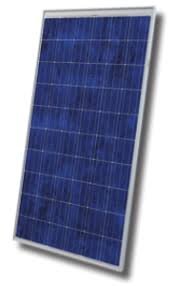Imagine you are driving down the highway. All the sudden, all traffic comes to a stop. There is an accident ahead. Luckily, there is a secondary road you can take and keep moving forward. Without this secondary pathway, you would be stuck on the highway. Solar modules function in the same way as above. If there is even a little bit of shade, the flow of electricity is blocked. By adding bypass diodes, a solar module now has multiple pathways. This allows for the electricity to flow even if there is a blockage.
Typical solar modules will have at least three bypass diodes. These three diodes separate the solar module into three sections. In other words, your solar module has three pathways for electrical production. If one section of the module is shaded from the Sun, the other two sections will still produce electricity. This does mean the module will be reduced to 2/3 of its normal production. However, without the bypass diodes, the production would be zero.
The question now is how these sections are created. If you look at your solar module, you will notice silver tabs at the bottom. And typically, there will be three separate silver tabs. This tells you how the module is divided into sections (See figure 1). Because of the bypass diodes, each of these sections can function independently of the other two.
What does this mean for your solar array? If you have a location for your solar array that has some shading issues, you can still optimize that array. Let us look at two examples:
Figure 1
Example one: You have morning shade that affects the Eastern edge of your array.
In this example, it would make sense to mount your modules in portrait. This is just like when you print a piece of paper. The longer side of the module faces North-South. By mounting the solar module this way, we are allowing the bypass diode to do its work. If the Eastern edge of the array is shaded, we may lose a few sections in our modules, but the remaining sections will still produce electricity.
Example two: You have morning shade that will cover the bottom edge of the array.
In this example, if we mounted our array in portrait like above, we would have zero production. This is because we have blocked every bypass diode. Mounting the modules in landscape would be a better idea. By doing this, you will lose roughly 1/3 of your electrical production during the shade. But the bypass diodes still work, and you get 2/3 production.
Remember, when it comes to off-grid arrays, our goal is maximum production. This allows us to have a more reliable off-grid array. And that reliability will also translate into a longer lasting system.








